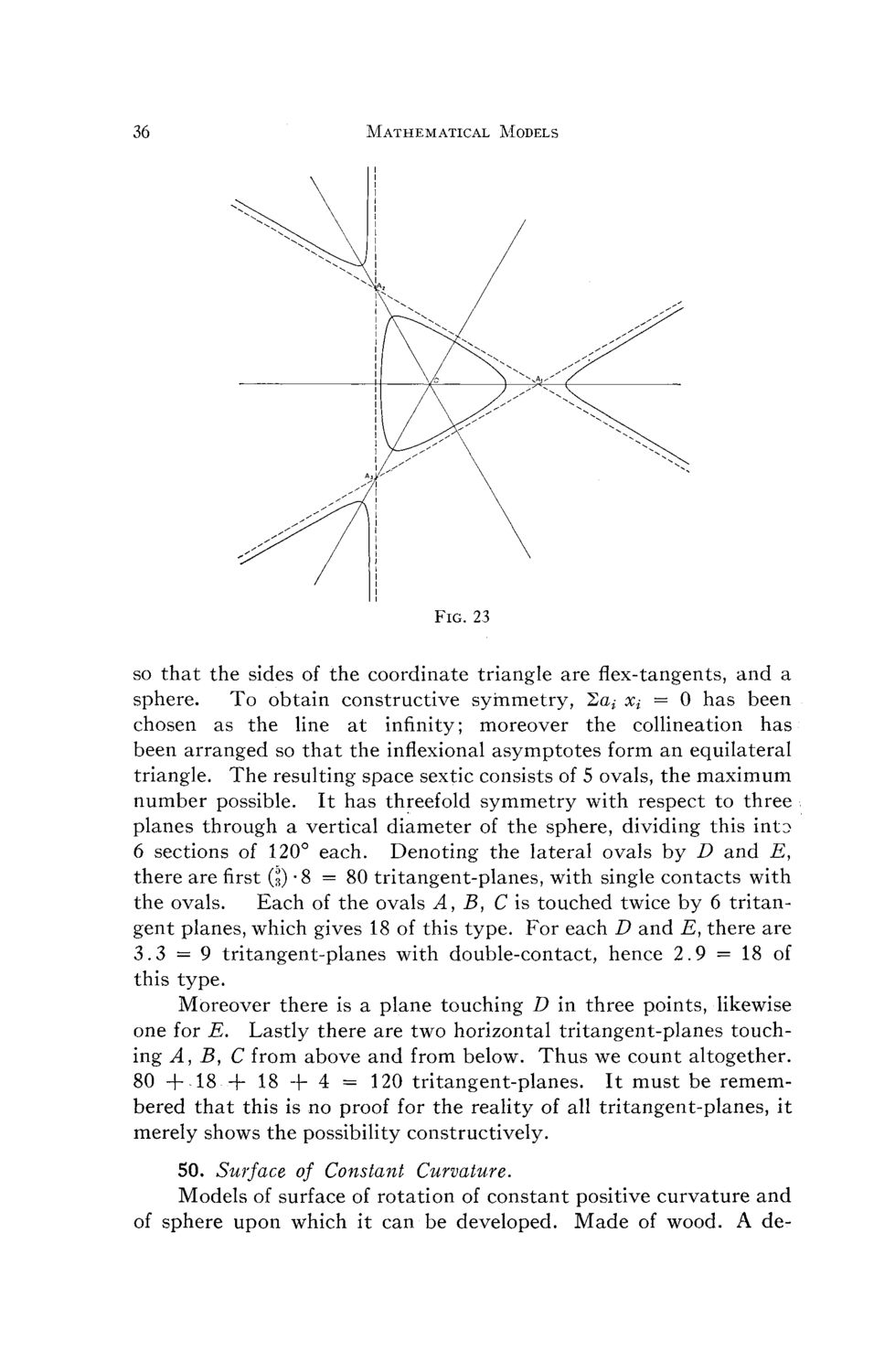| |
| |
Caption: Mathematical Models by Arnold Emch - Series 4 (1928)
This is a reduced-resolution page image for fast online browsing.

EXTRACTED TEXT FROM PAGE:
36 Mathematical Models Fig. 23 so that the sides of the coordinate triangle are flex-tangents, and sphere. T o obtain constructive symmetry, 2a; %i = 0 has been chosen as the line at infinity; moreover the collineation has been arranged so that the inflexional asymptotes form an equilateral triangle. The resulting space sextic consists of 5 ovals, the m a x i m u m number possible. It has threefold symmetry with respect to three planes through a vertical diameter of the sphere, dividing this into 6 sections of 120° each. Denoting the lateral ovals by D and E, there arefirst(3) -8 = 80 tritangent-planes, with single contacts with the ovals. Each of the ovals A, B, C is touched twice by 6 tritangent planes, which gives 18 of this type. For each D and E, there are 3.3 = 9 tritangent-planes with double-contact, hence 2.9 = 18 of this type. Moreover there is a plane touching D in three points, likewise one for E. Lastly there are two horizontal tritangent-planes touching A, B, C from above and from below. Thus we count altogether. 80 + 18 + 18 + 4 = 120 tritangent-planes. It must be remembered that this is no proof for the reality of all tritangent-planes, it merely shows the possibility constructively. 50. Surface of Constant Curvature. Models of surface of rotation of constant positive curvature and of sphere upon which it can be developed. M a d e of wood. A de-
| |